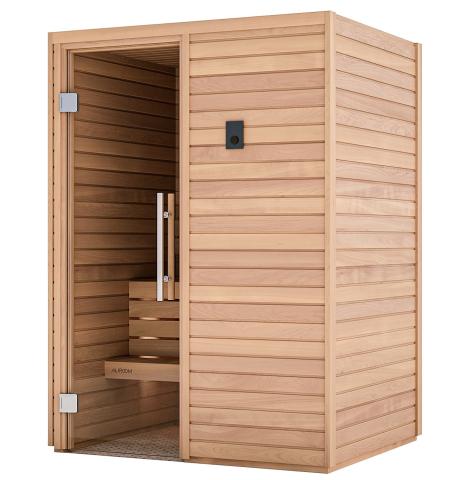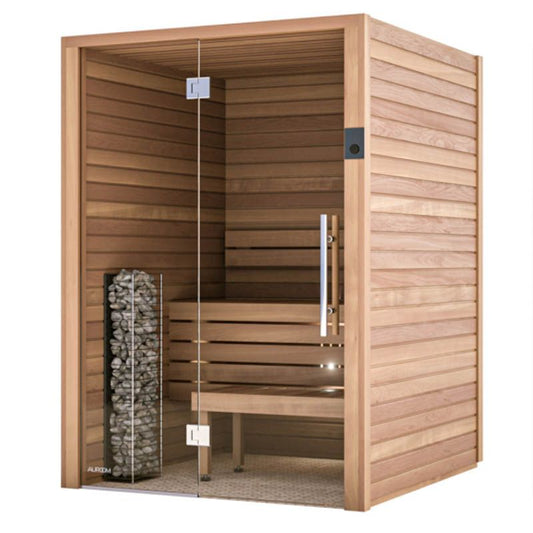Traditional Sauna - Questions
Traditional Sauna - Questions
Blog Article
The Best Strategy To Use For Traditional Sauna
Table of ContentsThe 7-Second Trick For Traditional SaunaThe Only Guide to Traditional SaunaTraditional Sauna Fundamentals ExplainedSome Known Incorrect Statements About Traditional Sauna
Many of the weight shed in a sauna is water loss and is re-gained upon rehydrating. Without a doubt sauna can be an important component of a healthy and balanced weight loss program. To consider the distinctions in between standard and IR saunas, I will separate these into proven, academic, and produced distinctions.Hence, the best point in the saunawhich is at the ceiling straight above the sauna heateris normally between 185 and 190 F. Traditional Sauna. Claims that a typical sauna surpasses 200 F is merely not real and not suitable for electric saunas sold in the United States. The temperature for a far-infrared sauna is typically set in between 120 and 140 F; nonetheless, unlike the traditional sauna, the goal in and IR room is not to attain a high temperature
Due to this, the temperature level difference is practically irrelevant, considering that profuse sweating leads to both sauna kinds, however the approach of warming the body is different. In an IR sauna the bather will certainly feel warm and will sweat a lot, however at much reduced temperature levels. Therefore, if the goal is to invest longer time periods in the sauna, the IR sauna is a great choice.

See This Report about Traditional Sauna
When the heat is accomplished, the components cycle on and off to maintain the heat. The majority of traditional sauna users enjoy putting water over the rocks to produce heavy steam to raise sauna moisture degrees. The benefits of pouring water over the rocks include: making the space a lot more comfy, moistening the nasal passages, and allowing the use of aromatherapy by mixing vital oils with the water.
In a far-infrared sauna, the heat waves permeate the body to successfully warm the body and raise the body core temperature level. To accomplish this increased temperature, Far-infrared emitters produce infrared power which is close to the same wavelength as that which the body normally emitsoften referred to as the "Important Variety" of 7 to 14 microns), so the energy is well gotten by the body.
When the power enters the body, it creates the body temperature to boost and eventually leads to sweating. In an infrared sauna it is necessary for the emitters/heaters to stay on nearly regularly. Considering that there is no mass of rocks to retain heat, the sauna will certainly cool if the emitters turned off.
As stated over, the sauna bather in an infrared space wants to position himself before operating emitters to get maximum gain from the warm. The heating time for the two areas can be very various, depending upon exactly how the rooms are utilized. For a conventional sauna, a bather must enable 30-40 mins for the space to achieve a wanted temperature discover this info here and to appropriately pre-heat the rocks.
Rumored Buzz on Traditional Sauna
A well built sauna will typically accomplish a temperature level of 150-160 F in about 30-40 mins (Traditional Sauna). For hotter temperatures, the area might require to warm for a longer duration. When the room attains established temperature level, the heater will cycle on and off, generally operating about 50% of the moment. The protected wall surfaces and the warmed rocks will certainly keep the space warm and at secure temperature levels.
To some, 15 minutes was "lost" while the infrared power heated the wood panels instead of heating a body, while others locate a pre-heated space to be extra comfortable and believe a raised beginning temperature is needed to begin sweating. The size of recommended use for each room is about the same (10-15 mins per session); however, their explanation because of the reduced air temperature levels and the ability to feel the impacts of infrared heat quicker than a standard sauna, it is not uncommon for an individual to spend an overall of 20-30 minutes in an infrared sauna.
Typical saunas often tend to be larger (therefore make use of more electrical energy) than infrared saunas, although standard saunas are certainly available in one and two individual sizes also. For a two-person standard sauna, 5x6 or 5x7 dimension is most prominent. The leading bench can pleasantly seat 2 or three people and is additionally enough time to rest throughout the sauna session.


The typical cost per kWH of electricity in the U.S. is approximately $0.11, so a 4.5 kW heating unit will certainly cost around $.50 to compete one hour, if the heater runs continually for one hour. Typically a sauna heating unit will certainly run for 75% of the initial hour and 50% of subsequent hours on because the components cycle once the established temperature is accomplished.
The 10-Second Trick For Traditional Sauna
A 2 individual far-infrared space is generally physically smaller than a standard sauna, frequently about 4' x 4' or smaller sized. The IR home heating system is generally 1.5-1.7 kW making use of a 120 volt 15 amp plug-in solution. Because the area can be this page used earlier than a sauna room, we will certainly presume the area is utilized for to of an hour including warm up time.
There is a rarely gone over difference in the social experience in between the two areas. While our culture has lost some of the social advantage of the traditional sauna experience, it can be very socially fulfilling. From family time in the sauna, to heart-felt conversations with substantial others, to sauna partiesthe standard sauna experience can result in intimate interacting socially.
Most greater end infrared areas include tinted light therapy, stereo and full-glass fronts. The size of most spaces allow for 2 people to comfortably make use of the space, while some layouts may permit a third or fourth individual to utilize the area. Custom-made infrared rooms are likewise readily available, with room sizes available approximately 7' x 8' x 7' high.
Report this page